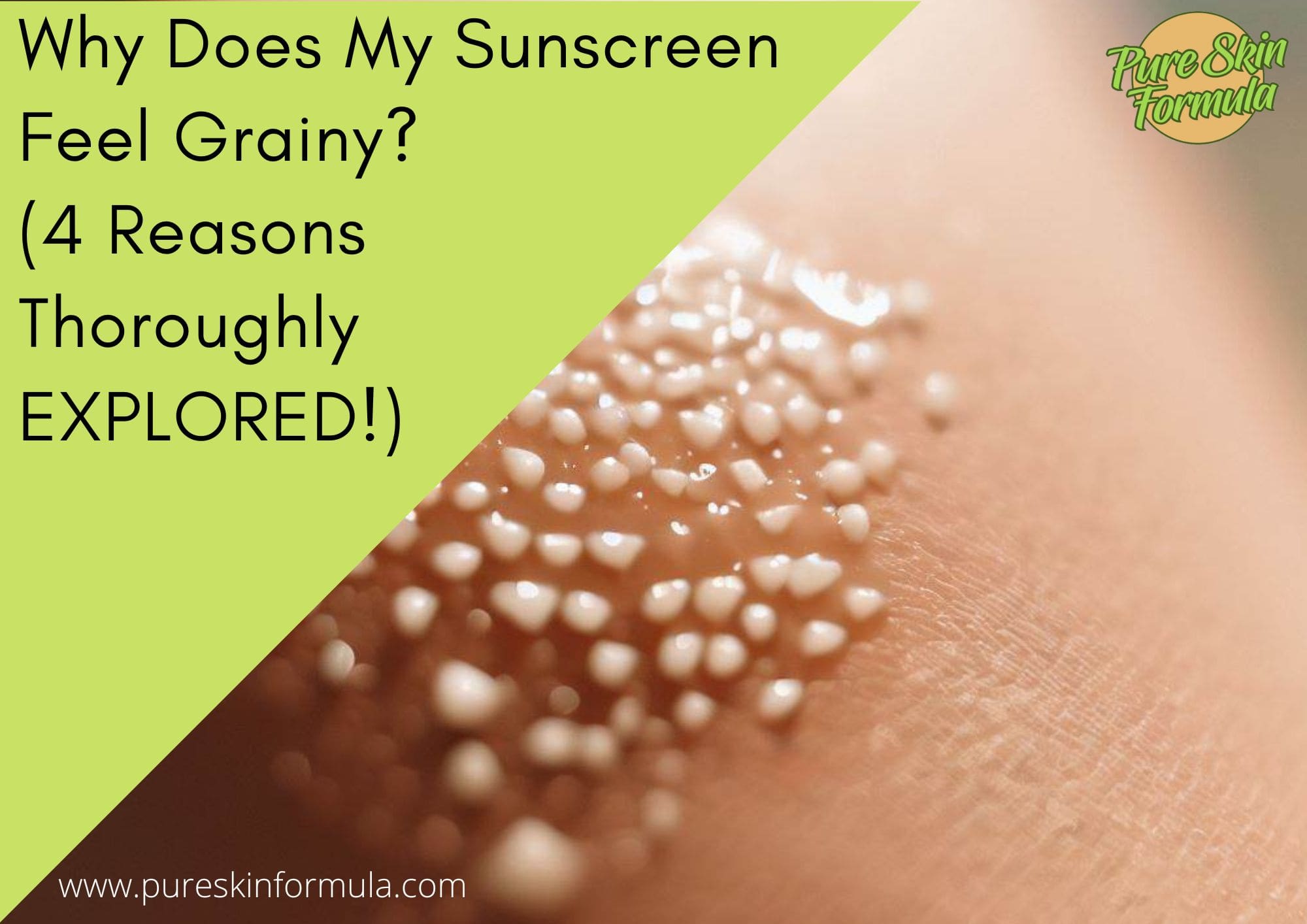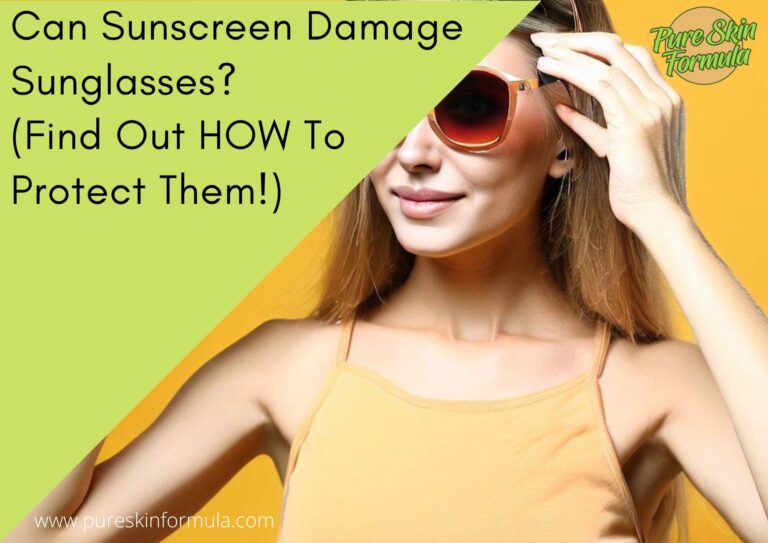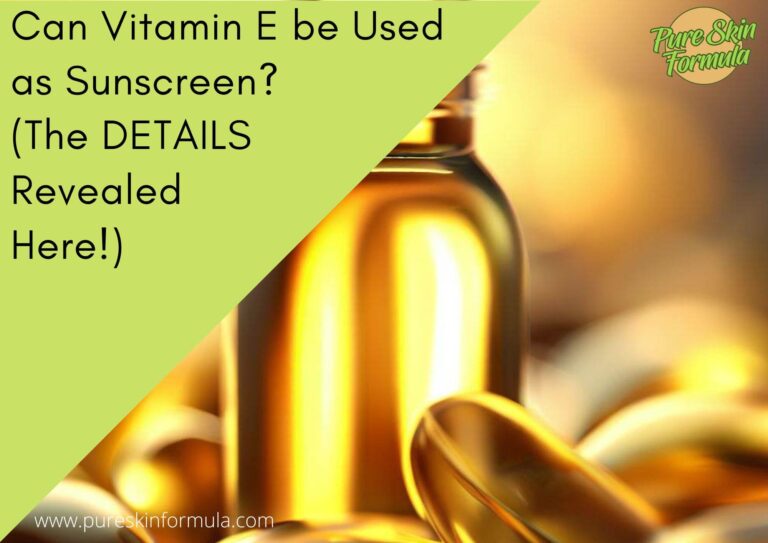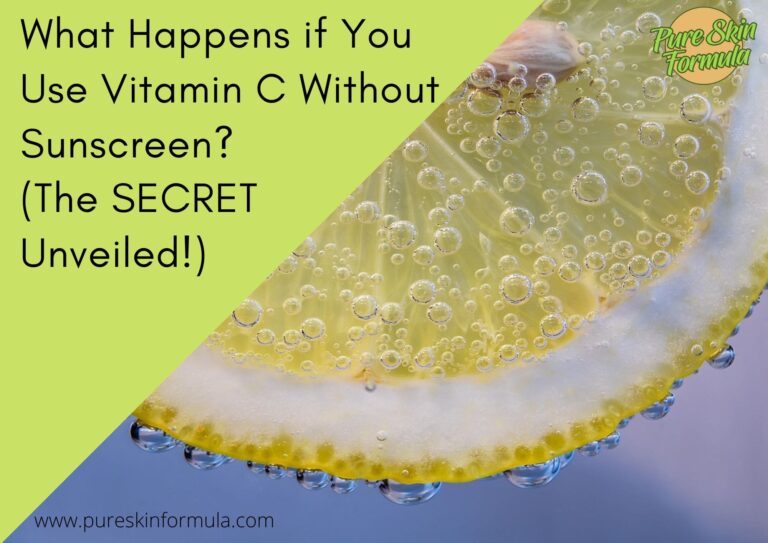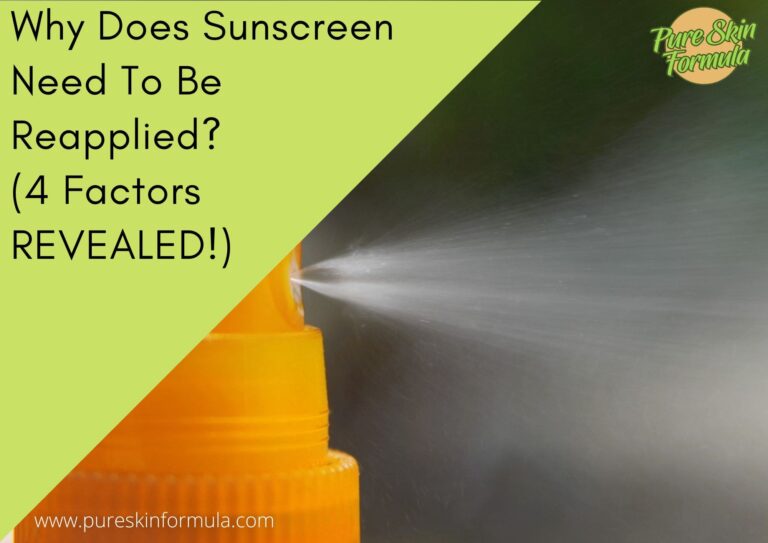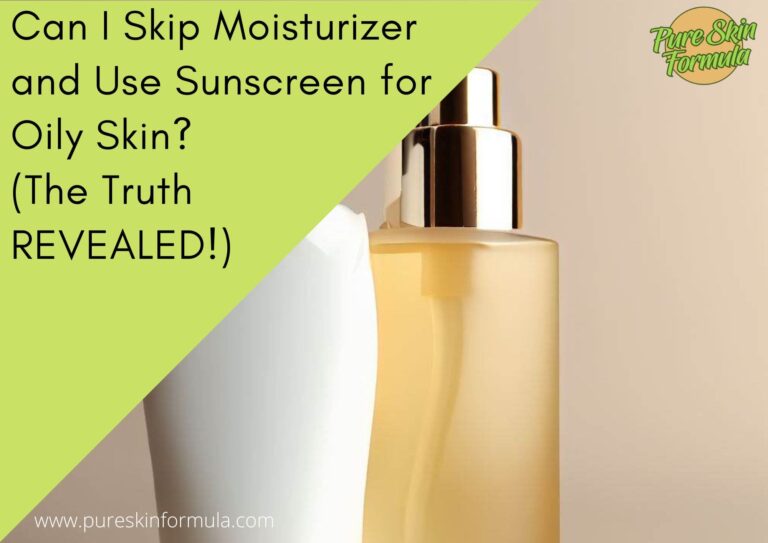Imagine this scenario: you’re basking in the glorious sunshine, ready to shield your skin from harmful UV rays. You reach for your trusted sunscreen, eager to achieve a smooth and seamless application.
However, you notice an unpleasant grainy sensation as you rub it onto your skin. What could be causing this unwelcome texture? Is it the result of inadequate dispersion of ingredients during manufacturing? Or is it due to the precipitation of UV filters?
In this article, I’ll explore the myriad reasons that can contribute to this puzzling issue, shedding light on the secrets of grainy sunscreen.
Why does my sunscreen feel grainy?
Five factors can cause a grainy texture in sunscreen.
- Inadequate dispersion of ingredients during manufacturing, resulting in uneven distribution of active and inactive components.
- Precipitation of UV filters may occur due to temperature fluctuations or incompatibility between certain ingredients.
- Improper formulation or using an expired product can also lead to clumping and graininess.
- Interaction between sunscreen and other skincare products. pH differences or incompatibility with oil-based or silicone-based products can contribute to the grainy texture.
Let’s explain the above in more detail.
Four reasons explored
This is the first one:
Inadequate dispersion of ingredients
When sunscreen is produced, it undergoes a manufacturing process where various ingredients are combined to create the final product. If the mixing process needs to be more thorough, it can result in adequate dispersion of the ingredients.

This means that the active and inactive components may not be evenly distributed, leading to a grainy texture when applied to the skin. The active ingredients provide UV protection, while the inactive ingredients contribute to the product’s texture, stability, and other characteristics.
Suppose the sunscreen is not formulated correctly or stored. In that case, the active and inactive ingredients may separate over time, causing graininess when the sunscreen is applied, as the ingredients need to be appropriately blended.
Let’s jump to the second reason:
Precipitation of UV filters
Sunscreen products can be sensitive to temperature changes. Exposure to high or low temperatures, especially during storage, can cause the UV filters in the sunscreen to precipitate.
It can produce a grainy texture, making the sunscreen less smooth and pleasant to apply. Sunscreen formulations often contain various ingredients, and specific ingredients may be incompatible.
This can lead to the separation or clumping of particles, resulting in a grainy texture. Incompatibilities can occur between the UV filters themselves or between the filters and other components in the sunscreen.
This is the third reason:
Clumping due to improper formulation or expired product
The wrong formulation of the sunscreen can contribute to clumping and graininess.
If the proportions of the ingredients are not balanced correctly, or if the manufacturing process is flawed, it can lead to clumps in the product.
Additionally, using an expired sunscreen can cause changes in its texture, including graininess.
Reaction to other skincare products
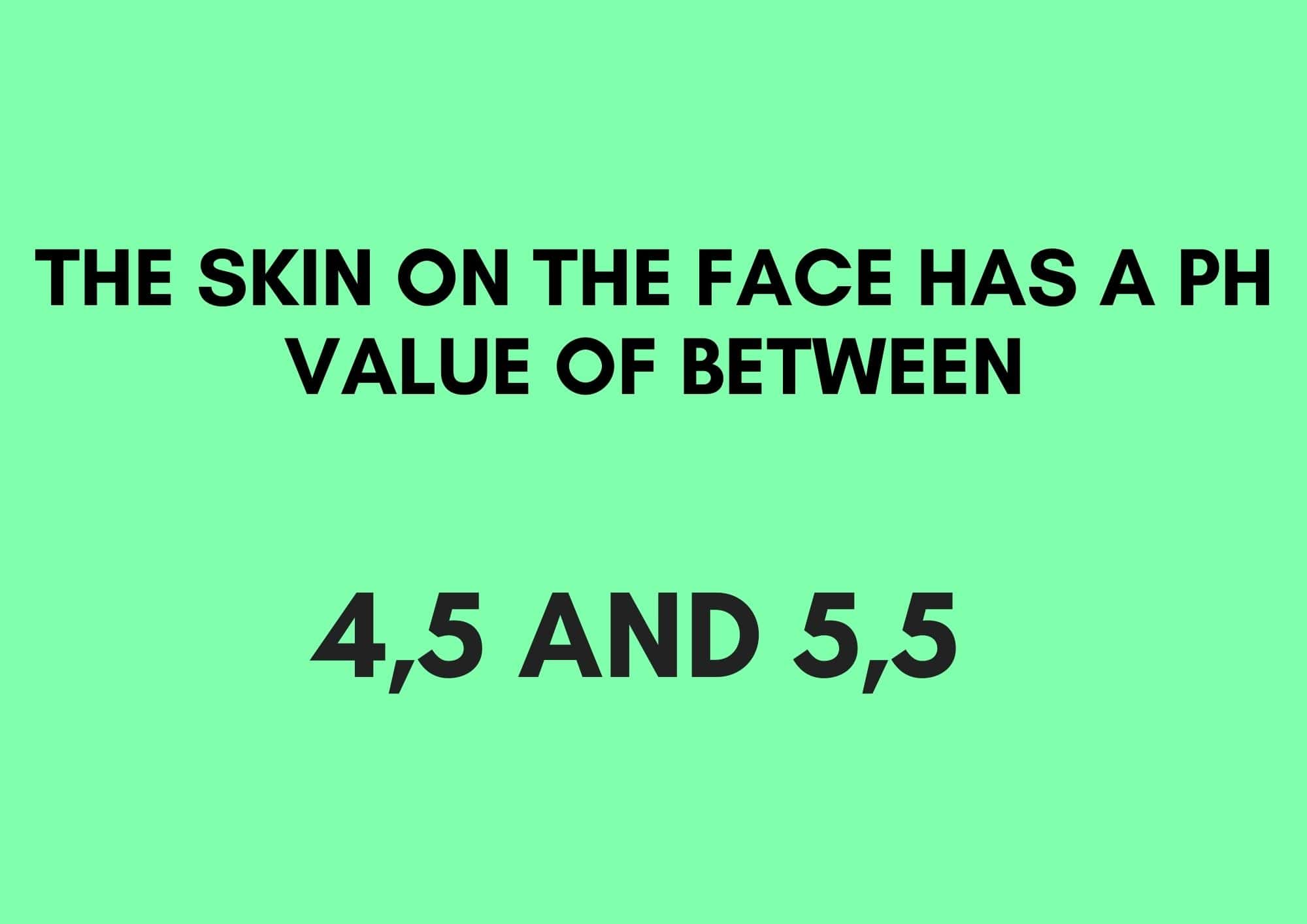
Skincare products, such as cleansers, toners, or moisturizers, often have specific pH levels and chemical compositions. When sunscreen is combined with other products, pH differences or chemical interactions may alter its texture.
These interactions can produce a grainy feel when the products are layered or used together.
Some sunscreens may not be compatible with oil-based or silicone-based skincare products. When these products are used together, they can create a grainy texture on the skin.
It’s essential to consider the compatibility of the sunscreen with other products in your skincare routine to avoid any adverse reactions or texture issues.
What to do to overcome graininess?
Before purchasing sunscreen, checking out product reviews and rating is a good idea. Hearing from others who have used the sunscreen can give you insights into their experiences, including any issues with graininess.
Look for reviews that mention the texture and consistency of the product to make an informed decision. Opting for well-established brands and reliable formulations can increase the chances of finding a sunscreen that is less likely to have graininess issues.
Established brands often have rigorous quality control processes and have refined their formulations over time, resulting in more consistent textures.
One simple solution to overcome graininess is to shake the sunscreen well before applying it. This helps redistribute the ingredients and break down any clumps that may have formed.

Instead of applying a large amount of sunscreen at once, consider applying it in smaller amounts and layering if needed. This technique allows for better distribution and absorption of the product. Start with a thin layer and add more as necessary, ensuring complete coverage.
If you notice graininess in sunscreen, try rubbing the product between your palms before applying it to your skin. The friction and heat generated from rubbing can help break down clumps and promote better dispersion of the ingredients.
After rubbing the sunscreen, it should feel smoother and more consistent.
Proper storage of sunscreen is essential to maintain its texture and effectiveness. Avoid exposing the sunscreen to extreme temperatures, such as leaving it in a hot car or the freezer.
To prevent graininess, store your sunscreen in a location that is not prone to temperature fluctuations or excessive humidity.
Choose a cool and dry area away from direct sunlight, such as a bathroom cabinet or a drawer.
You could perform a patch test before incorporating a new sunscreen into your skincare routine. Apply a small amount of sunscreen to a discreet area of your skin and observe any adverse reactions.
If the sunscreen interacts negatively with your skin or causes graininess when layered with other products, it may not be compatible.
Should you seek professional advice?
Sometimes, graininess in sunscreen can be a symptom of an underlying skin condition. Consulting a dermatologist can help identify if any skin conditions, such as dryness, eczema, or sensitivity, may affect your sunscreen’s texture.
They can evaluate your skin’s health and recommend appropriate treatments or adjustments to your skincare routine.
Conclusion
I hope the mystery of grainy sunscreen has been unraveled.
I’ve explored the various factors that can contribute to this vexing issue, from inadequate ingredient dispersion during manufacturing to the precipitation of UV filters and clumping due to improper formulation or expired products.
I’ve also shed light on the potential reactions with other skincare products and the importance of storing sunscreen appropriately. With this knowledge, you can take proactive steps to overcome graininess and achieve a smooth, enjoyable sunscreen experience.
Remember to consult professionals if needed and consider pre-purchase research to find reliable brands. With these insights, you can confidently embrace the sun with a flawless, velvety sunscreen application.
Thank you for reading!
Valeria

